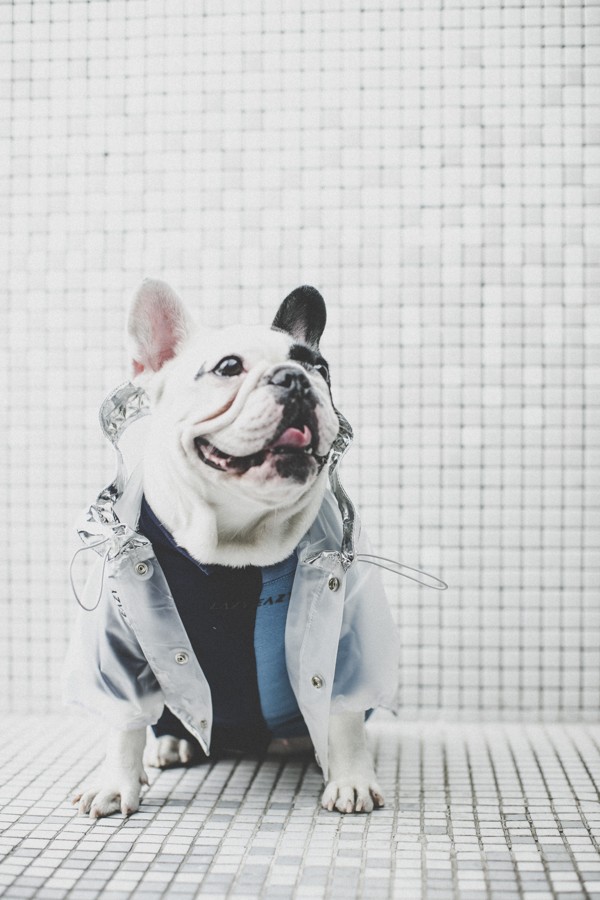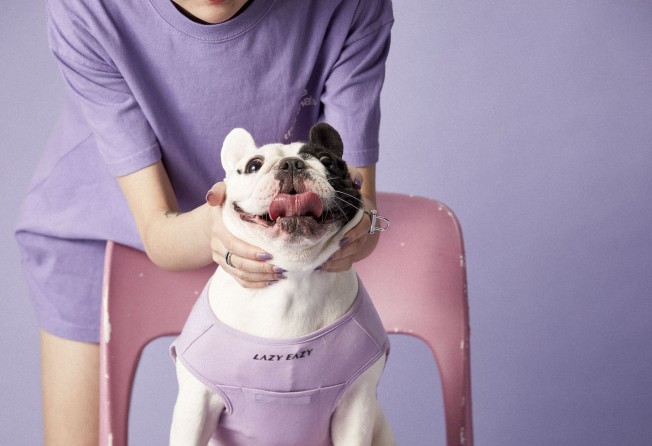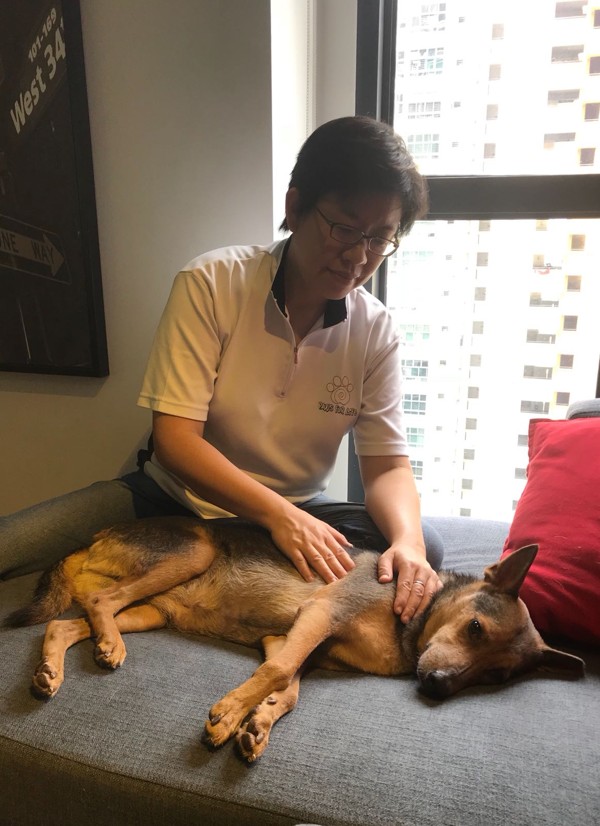
Hong Kong’s pet spa, Singapore’s gourmet dog food. What’s with Asia’s pet fetish?
If you thought designer clothes, photoshoots and organic meals were solely the preserve of fussy humans …

A flourishing multibillion-dollar pet-care industry has emerged in Asia, dominated by designer clothes, gourmet food and luxurious spas for its very special clientele.
While Asia’s economic growth is stuttering as trade tensions between the United States and China ratchet higher, the growth of its pet economy is accelerating.
Market research firm Euromonitor has projected that the burgeoning pet-care industry in the region will expand by 70 per cent by 2022, with expenditure to hit US$21.1 billion.
The pet-economy boom is fuelled by Asian economies such as China, Hong Kong and Singapore. The growth is even outstripping that of the human economy as people humanise their pets.
In China, for instance, pet owners are projected to spend 59.1 billion yuan (HK$68 billion) on their pets by 2022, up from 20.2 billion yuan last year. This means the pet market will grow at an annual rate of around 20 per cent, significantly higher than economic growth which expanded by just 6.9 per cent last year.
It is the same story in Hong Kong and Singapore.
Pet expenditure in Hong Kong rose 40 per cent over the last five years, hitting HK$1.3 billion last year. High growth is projected to continue in the next five years, at nearly 6 per cent annually – double the rate its economy has grown in recent years.

In Singapore, the pet craze is a tad more muted. Shoppers spent S$138 million (HK$794 million) on their pets last year, about 20 per cent more than five years ago. Euromonitor expects this to grow by a further 4 per cent to 5 per cent annually in the next five years.
In comparison, the country’s economy grew by 2.4 per cent in 2016 and 3.6 per cent last year.
So what is causing this spike in the pet economy amid lacklustre global growth?
As pet owners increasingly treat their pets like family members, marketers are commercialising the trend into a vast range of goods and services, market research firm Spire Research and Consulting notes.
“Changes in consumer lifestyles and rising disposable income are driving acceptance for pets and boosting the entire pet-related industry along the way,” it adds.
CREATURE COMFORTS
Riding on the wave of indulgent pet owners are animal entrepreneurs who are offering over-the-top products and services catered to pets.
In Shanghai, there is designer pet clothing line Lazy Eazy, which sells raincoats, woolly turtle-necks, and activewear for dogs, made of the same type of fabric used in baby clothes and adhering to the same safety standards. Each item is sold for between 168 yuan and 328 yuan.
To test the waters, the firm launched just four items in January this year. And they were snapped up within a month, says founder Jeff He, who started the brand after buying his French bulldog, PannPann.

In September, it will launch its first autumn/winter collection – its third release since the company was founded last year – on Chinese e-commerce platforms like Taobao and WeChat.
At pet salon SexySushi in Hong Kong, full grooming can cost up to HK$1,658 for large dogs weighing above 20kg. Throw in a milk and herbal spa, designed to improve fur quality and skin problems, and the cost hits nearly HK$2,500.
The salon’s staff even records the grooming process and has a small photo shoot for the pooches at the end of it, as a form of service to their owners.
“Not only does it record the cute moment, it also serves as a memory. When the elderly pet passes on, these photographs and videos will be precious to the dog owners,” says Dobby Lam, an employee at SexySushi.
She does not think their services are excessive. “What’s important is that [the pets] are healthy and happy,” she says.
Over in Singapore, the growing awareness of the need to stay healthy, driven by national campaigns like the government’s war on diabetes, has not only made people more health conscious for themselves – but in their pet-food purchases too.
Pet owner Eeleen Heng, 39, who has a miniature schnauzer and a mongrel, has shunned mass-produced dry pet food for freshly cooked meals.
The finance director started cooking for her dogs after her schnauzer got cancer seven years ago. This year, she went more gourmet by ordering from a professional fresh pet-food producer. Not surprisingly, her expenditure on dog food has spiked from S$150 a month to S$450 – enough to sustain a human being.
She was drawn by the convenience and the quality of the meals, which are developed with the help of a nutritionist. The funny thing is, she eats less lavish meals on a regular basis.

“When I cooked for my dogs I would buy organic vegetables and meat. My friends said: ‘You are crazy, you don’t even eat organic food yourself’,” Heng says.
She orders from The Grateful Dog, one of at least four companies in Singapore selling cooked dog food that looks fit for humans.
An example of a meal: grass-fed lean beef, unskinned sweet potato, bell pepper, spinach, olive oil, rosemary and a special nutrient blend.
The company has served 300 dog owners since it started last year, amounting to some 13,000 meals, according to co-founder Sandee Goh.
These days, she gets a new inquiry every day for the meals, which are sold through two-week, four-week or 12-week subscription plans. A meal costs S$9 to S$11 a day for a 10kg dog on a four-week plan.
“Nowadays, dog owners are not comfortable not knowing where the ingredients in their dog food are coming from,” says Goh, who prepares all the meals from scratch.
PET POTENTIAL
The pet economy could, in fact, be far bigger, as some items are not counted in global expenditure data.
Euromonitor does not consider money spent on non-traditional pet services such as pet insurance, canine massages and pet hotels.
There are luxuries that are becoming more mainstream, and which could push expenditure on pets to new heights.
Aon Singapore’s Happy Tails pet insurance has seen double-digit annual growth since it started in February 2015. Pet owners have even asked for coverage for non-surgical procedures, dental and overseas medical treatment, says Roy Ng, an associate director at Affinity Asia, a division under Aon.
The current plans, where annual premiums can range from around S$265 to over S$1,800 for dogs depending on the breed, age and grade of plan, cover mainly chemotherapy and surgical expenses.

Paws Fur Life, which has been offering massages to dogs since 2014, has also seen its clientele for regular massages grow from just five dogs to more than 20, according to co-founder Karen Lim, who is certified in canine massage.
Fees start from S$55 for a 30-minute massage for a small dog under 10kg.
Rina Ng, 36, whose eight-year-old mongrel suffers from rheumatoid arthritis, spends S$60 a week on massages to ease the pain in its joints. “It is not luxurious like a mud spa or exfoliating session. I see it as physiotherapy, an alternative treatment without drug side effects,” says Ng, a dog sitter.
The truth is, pets are now considered part of the family. And with growing affluence, more pet owners are willing to shell out big money for their “family member”.
As Heng puts it: “It is like how I spend a certain amount on education on my child. These dogs are my children too. I feel that forking out a few hundred a month is acceptable because they also deserve to have a good life.” ■